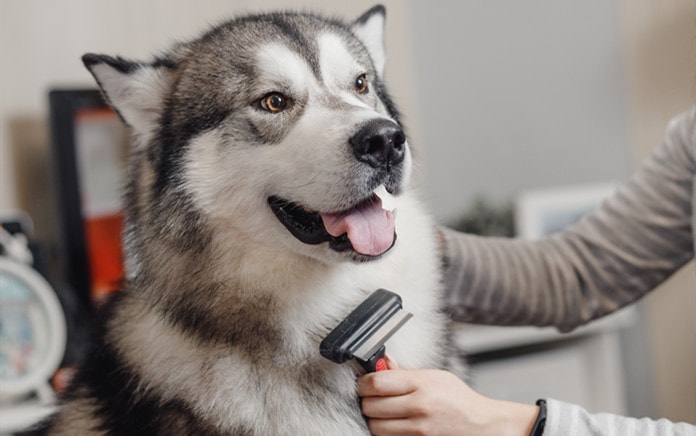As a dog owner, you should provide your pet pooch with the best hygiene items so you can properly care for their well-being. Your dog might be prone to swimming around in the mud, or, maybe, they love to dig around your property. If so, then you should know the importance of proper dog-cleaning habits.
Your furry four-legged friend doesn’t have the means to tell you that they already need a bath. Hence, it would be best if you take the initiative to search for the best products to clean your pet pooch.
Whether your pet easily gets soiled or if they like to roll around in the dirt, below are ways to help you select the best hygiene products to keep them clean and fresh at all times. Read on!
How To Choose The Best Dog Hygiene Items In Three Steps
1. Choosing A Dog Brush
You can find several pet products on the market. For example, you can find different pet brushes here. However, don’t confuse cat brushes for dog brushes, as these two types of products pretty much serve different purposes.
Dog brushes may have unique properties that cat brushes don’t have. Using a dog brush on a cat might bring harm to the poor feline.
With that said, you can choose different dog brushes on the market. Each type of dog brush will have distinct pros and cons.
Here are the four main types of dog brushes, along with their benefits and disadvantages:
• Slickers
Slicker brushes have short and fine wires. Use this brush if your canine has long and curly hair to remove mats and unkempt fur. However, the tight spacing between the wires may cause discomfort to your dog if you use too much pressure.
• Rakes
Use rakes for thick-haired dogs, such as Malamutes, German Shepherds, and Chow Chows. Search for a rake with appropriate teeth length for your dog’s breed. Otherwise, you might use a rake brush with teeth that are either too long or too short.
• Bristles
Bristle brushes are excellent choices for short- and smooth-haired dogs, like Boston Terriers, Italian Greyhounds, and Pugs. These brushes have tightly packed bristles to help remove loose hair. Like slickers, bristles can be harmful to your pet pooch if you add extra unwanted pressure.
• Pins
Pin brushes tend to look similar to human brushes. These dog hygiene products tend to be the least useful when compared to the other variants. It’s because these brushes tend to have difficulty catching loose hair. However, pins can be ideal as a finisher to a dog-grooming session.
Make sure to keep your dog calm while brushing their fur. Otherwise, it wouldn’t matter what brush you use as you might hurt your pet.
2. Choosing A Dog Toothpaste
Like humans, dogs are also susceptible to gum or periodontal disease. However, humans have a better chance of knowing proper dental habits than dogs. Your furry four-legged family member might even munch on things that shouldn’t even touch their mouth.
Maintain your dog’s excellent oral health by choosing the right toothpaste. Don’t use human toothpaste on your pet’s teeth, tongue, and mouth. It’s because human toothpaste tends to contain an ingredient called xylitol, which is an artificial sweetener that can be hazardous to dogs.
Consider searching for a distinct dog toothpaste called enzymatic toothpaste. This particular dog dental care product has enzymes to help reduce harmful bacteria, lessen tartar buildup, and improve bad breath.
Furthermore, think about using flavored dog toothpaste. Some canines don’t like their human companions touching their mouths and teeth. But, introducing flavored toothpaste may help remedy that situation.
3. Choose A Dog Toothbrush
Aside from picking a dog toothpaste, don’t forget about choosing the best toothbrush for your pup. Also, don’t use human toothbrushes on dogs, particularly an old and used model. Human toothbrushes tend to have tough bristles, which can harm your dog’s teeth and gums.
Start the dog toothbrush selection process by looking at the size of your dog. Large dog breeds need toothbrushes with long handles and bristles. Use smaller toothbrushes for medium- and small-sized dogs.
Also, don’t disregard using the correct teeth-brushing technique. Brushing a large dog’s teeth might be challenging, particularly when trying to reach the jaw’s back. Hence, you must use toothbrushes with long handles and bristles.
Conclusion
The best hygiene items for dogs allow your pet pooch to stay comfortable during the entire cleaning process. Consider essential factors when selecting the right toothbrush, toothpaste, and brush from the market. Your pet will absolutely thank you for your efforts in choosing the correct products by giving you a kiss or two.




